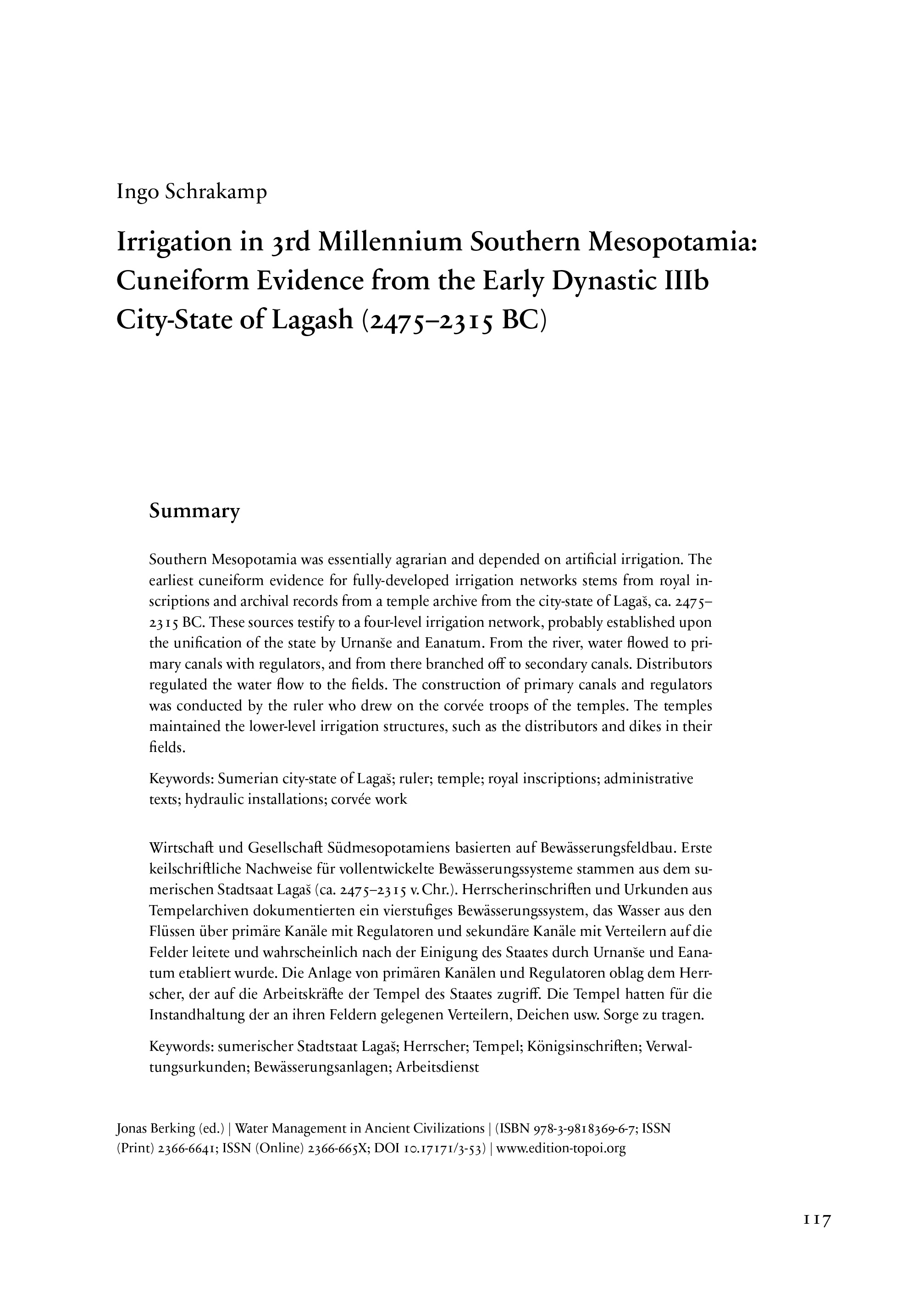Irrigation in 3rd Millennium Southern Mesopotamia: Cuneiform Evidence from the Early Dynastic IIIb City-State of Lagash (2475–2315 BC)
Southern Mesopotamia was essentially agrarian and depended on artificial irrigation. The earliest cuneiform evidence for fully-developed irrigation networks stems from royal inscriptions and archival records from a temple archive from the city-state of Lagas, ca. 2475–2315 BC. These sources testify to a four-level irrigation network, probably established upon the unification of the state by Urnanse and Eanatum. From the river, water flowed to primary canals with regulators, and from there branched off to secondary canals. Distributors regulated the water flow to the fields. The construction of primary canals and regulators was conducted by the ruler who drew on the corvée troops of the temples. The temples maintained the lower-level irrigation structures, such as the distributors and dikes in their fields.
Wirtschaft und Gesellschaft Südmesopotamiens basierten auf Bewässerungsfeldbau. Erste keilschriftliche Nachweise für vollentwickelte Bewässerungssysteme stammen aus dem sumerischen Stadtsaat Lagas (ca. 2475–2315 v. Chr.). Herrscherinschriften und Urkunden aus Tempelarchiven dokumentierten ein vierstufiges Bewässerungssystem, das Wasser aus den Flüssen über primäre Kanäle mit Regulatoren und sekundäre Kanäle mit Verteilern auf die Felder leitete und wahrscheinlich nach der Einigung des Staates durch Urnanse und Eanatum etabliert wurde. Die Anlage von primären Kanälen und Regulatoren oblag dem Herrscher, der auf die Arbeitskräfte der Tempel des Staates Zugriff. Die Tempel hatten für die Instandhaltung der an ihren Feldern gelegenen Verteilern, Deichen usw. Sorge zu tragen.

